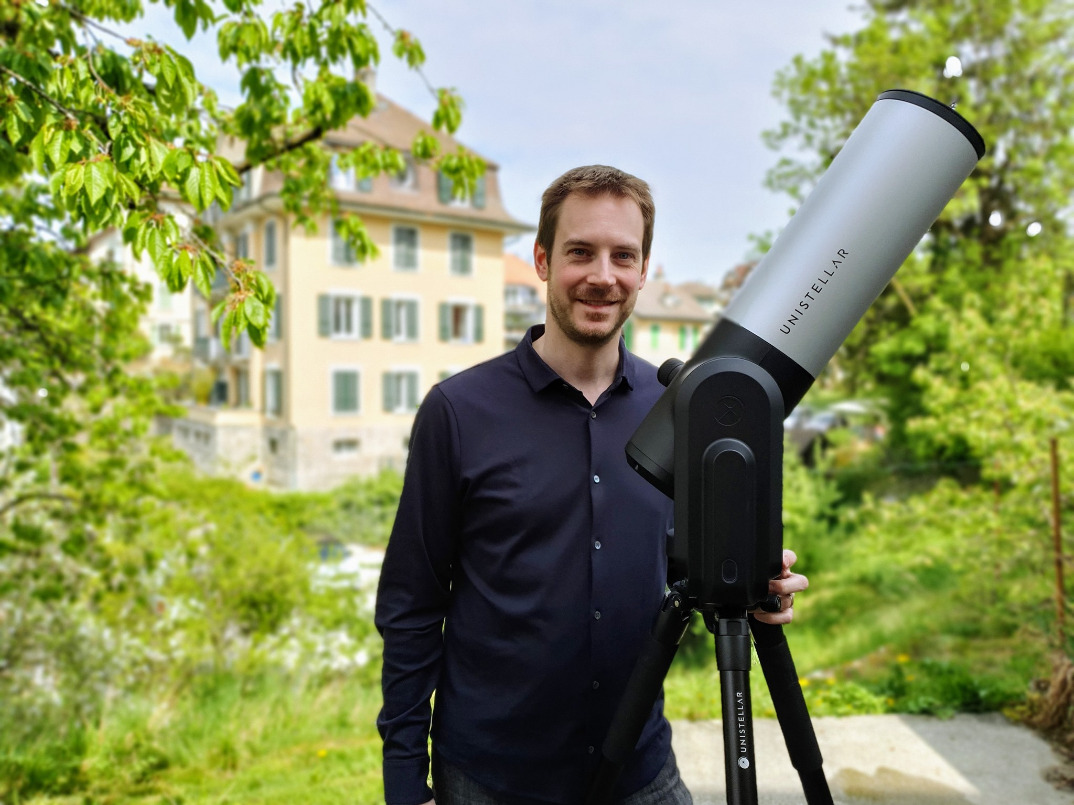Featured
Backyard astronomy produces ‘citizen science’ success
Citizen science pioneers recently made two contributions to a better knowledge of outer space. Backyard astronomers of the SETI Institute and Unistellar network conducted in April citizen science
observations,
and their discoveries will improve our understanding of asteroids and
exoplanets. Thanks to their work, we know precisely the location of the
main-belt asteroid 2000 UD52 and have confirmed an exoplanet transit of
Qatar-1b.
Detecting an Asteroid Occulting a Star

After receiving an alert from SETI Institute scientists, on the night of April 9, Morand, a partner in a French strategy consulting firm, seized the opportunity to become an early pioneer in citizen science. He quickly set up his eVscope in his backyard in Western France.
A few minutes later, he succeeded in detecting an occultation by main-belt asteroid 2000 UD52, which occulted a star that was visible with his eVscope. This observation provides new insights about this celestial object, including an accurate estimate of its location.
Here is how he described his experience: “The occultation was very brief, 0.3s (the predicted maximum was 0.8s), therefore particularly difficult considering the small size of the asteroid (approximately 6.6 km) and the width of its centrality band. Having observers near and into the centrality band allowed us to better determine the position of the asteroid, and therefore refine its orbit! What a feeling!”
Detecting an Exoplanet Transiting over its Star
The Citizen Science
team is also monitoring transiting events involving Jupiter-size
exoplanets. On the night of April 23, Julien, a consulting manager in a
Swiss public office, received an alert and tried to detect the Qatar-1b
gas giant exoplanet transiting its star. Again, his willingness to contribute to cutting-edge science was rewarded with the resulting light curve proving that a detection was achieved.
“It takes me back to my childhood, the day I learned about the discovery
of the first exoplanet,” said Julien. “I was so excited, and never
could I have imagined that it will one day be possible for me to detect
an exoplanet myself!”

Figure 1 Light curve of Qatar-1 b exoplanet detected on April 23, 2020, with a Unistellar eVscope
Both results have been submitted and are now stored on scientific data
repositories so that astronomers around the world can access them.
Euraster, the European Asteroidal Occultations network, published the positive
detection of 2000 UD52 on its website. Unistellar
network’s detections of exoplanet transits have been published by
the American Association of Variable Star Observers (AAVSO) in
partnership with the Exoplanet Watch program.
A New Era in Citizen Science
These two positive detections mark the beginning of a new era in amateur astronomy, where a network of backyard observers can contribute to real science, dedicating their time and passion to new discoveries.
“Enabled by the most revolutionary innovation in amateur astronomy to come along in decades, we are literally crowd-sourcing scientific discovery and cutting-edge astronomy,” said Bill Diamond, CEO of the SETI Institute. “The power of citizen science
in astronomical
observations made possible by the Unistellar eVscope has already
demonstrated breakthrough results – and we’re only just getting
started. As more users join our science team, the future holds unimaginable possibilities.”
The SETI Institute and Unistellar are working together to increase the
network’s potential for scientific studies and new discoveries.
“18 asteroid occultation campaigns involving 65 backyard astronomers, and 18 transiting exoplanet events, have been reported just since February 2020. Passionate citizen scientists have uploaded more than 1 million data frames on our servers. “ said Franck
Marchis, Senior Astronomer at the SETI Institute and Chief Scientific Officer at Unistellar. “Citizen scientists are pioneers directly contributing to current and future space exploration programs.”
Share
- Click to share on X (Opens in new window) X
- Click to share on Facebook (Opens in new window) Facebook
- Click to share on LinkedIn (Opens in new window) LinkedIn
- Click to email a link to a friend (Opens in new window) Email
- Click to share on Reddit (Opens in new window) Reddit
- Click to share on WhatsApp (Opens in new window) WhatsApp
- Click to share on Pinterest (Opens in new window) Pinterest
| Thank you for Signing Up |



















